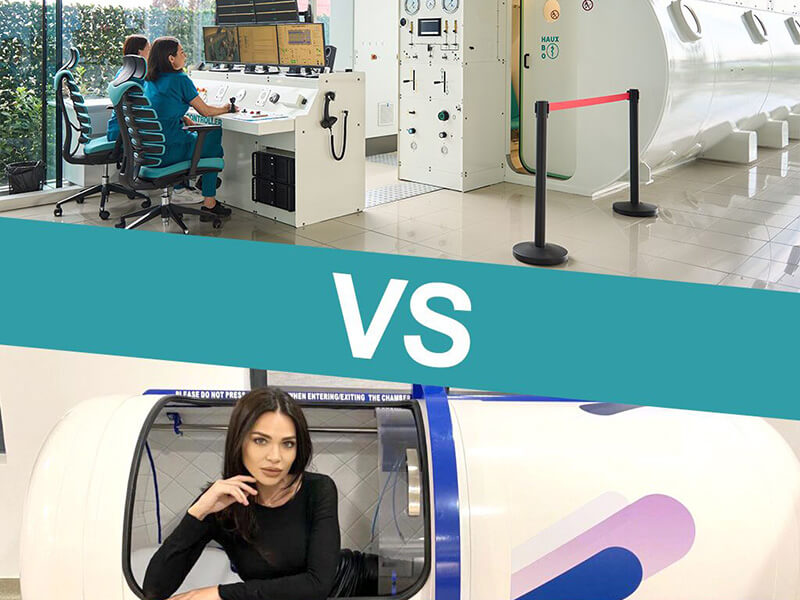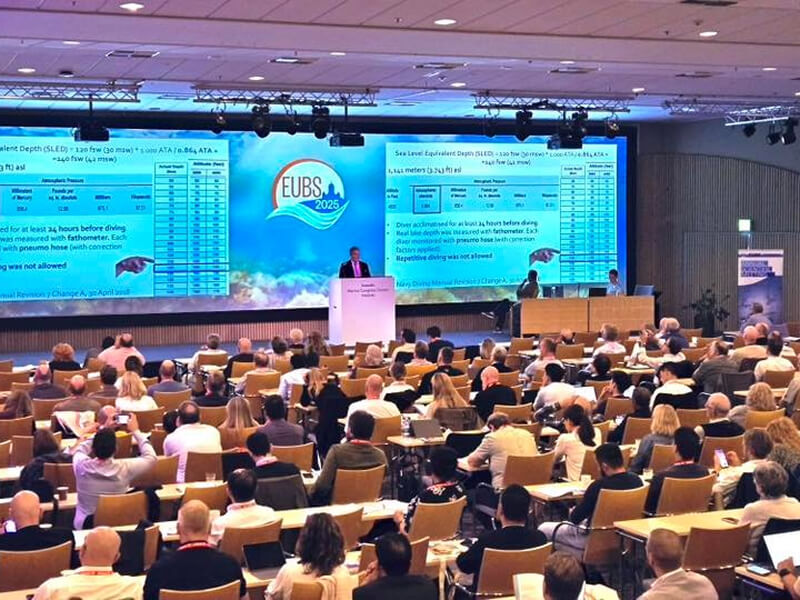
Article reviewed by: Dr. Sturz Ciprian, Dr. Tîlvescu Cătălin and Dr. Alina Vasile
How Does Hyperbaric Therapy Work?
Recently, hyperbaric oxygen therapy has captured the attention of a growing number of people, becoming a topic of interest both for those looking for less invasive alternatives to traditional treatments and for those dedicated to a of healthy living. Although the term hyperbaric oxygen therapy is becoming more familiar in media and social media discussions, the subtleties and exact mechanisms of this therapy often remain unclear.
Hyperbaric oxygen therapy, far from being considered a miracle cure, is recognized as hyperbaric medicine and respected in the most many countries with a developed medical system such as the United States, Germany, Italy, France, Israel, etc. This branch has been regarded for decades as a full and legitimate medical specialty. In this article we will explore how it works, starting with how pure oxygen is administered in a controlled environment, and detailing the profound impact it has on the human body. We will focus on the physiological processes involved, how hyperbaric therapy can accelerate wound healing, improve cellular functions and provide relief in various medical conditions.
The air we breathe has around 21% oxygen. When we breathe, oxygen enters the lungs and is taken up by red blood cells, known as red blood cells. These red blood cells have hemoglobin in them, a substance that binds to oxygen and helps it travel through the blood throughout the body. Blood circulates through veins and arteries, carrying oxygen to every part of the body, from tissues to organs. When it reaches the tissues, the oxygen is released from the red blood cells and enters the cells, which use it to function properly. This process is essential to our health and happens continuously. The image below illustrates how oxygen from the air is taken up and distributed to cells in different parts of the body.
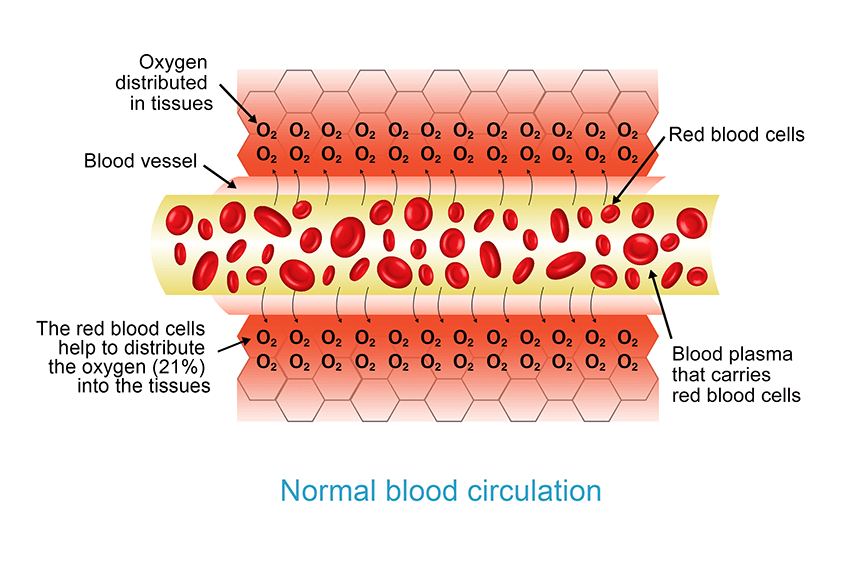
When blood vessels in the body narrow or become blocked due to disease, they can no longer carry enough oxygen to the tissues. This can cause swelling, pain and even cell death, especially in chronic or severe disease. Hyperbaric therapy comes to the aid of this problem. It involves breathing pure oxygen in a special chamber with high pressure, up to 3 atmospheres. This pressurized environment allows more oxygen to reach the areas of the body that need it, even if the blood vessels are narrowed. Thus, oxygen can help heal tissues and prevent cell death. In essence, it's like delivering a powerful boost of oxygen to where the body can't effectively transport it on its own. The image below illustrates this sequence of events, from narrowing of vessels to tissue damage due to lack of oxygen.
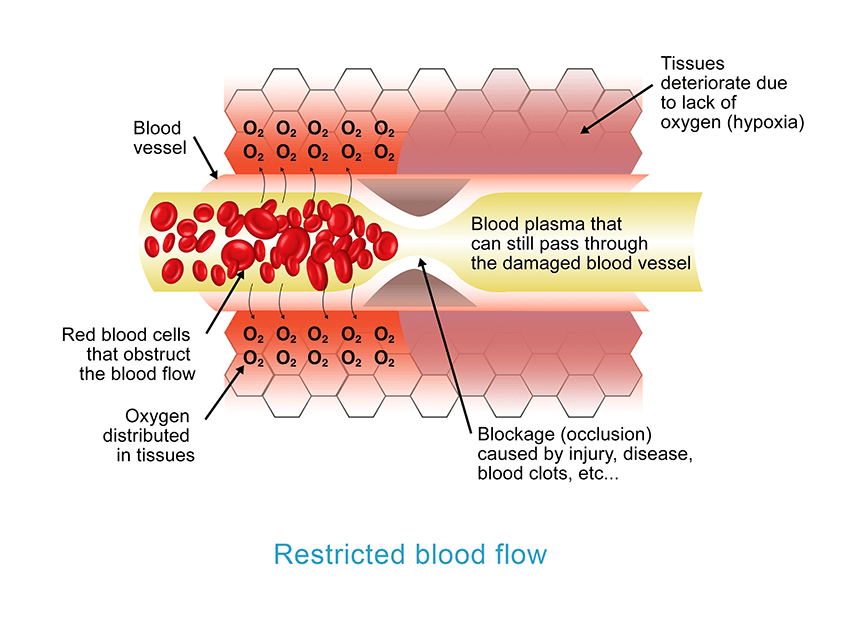
When we breathe pure oxygen, meaning 100% oxygen, in a special high-pressure chamber called a barochamber, oxygen can enter our body much more easily. Thus, even in situations where blood circulation is obstructed, hyperbaric oxygen can penetrate deeper into body tissues, up to three times more than under normal conditions. The result is that areas that previously did not receive enough oxygen are now better oxygenated, leading to improved functionality. Problems such as swelling and pain, which occur due to lack of oxygen in the tissues, can thus be relieved by hyperbaric therapy. In addition, this treatment helps to form new and small blood vessels, improving blood circulation and tissue oxygenation. The image below shows how, through hyperbaric therapy, oxygen reaches much deeper into the tissues through the intercellular fluid and plasma, even in the presence of a vascular blockage.
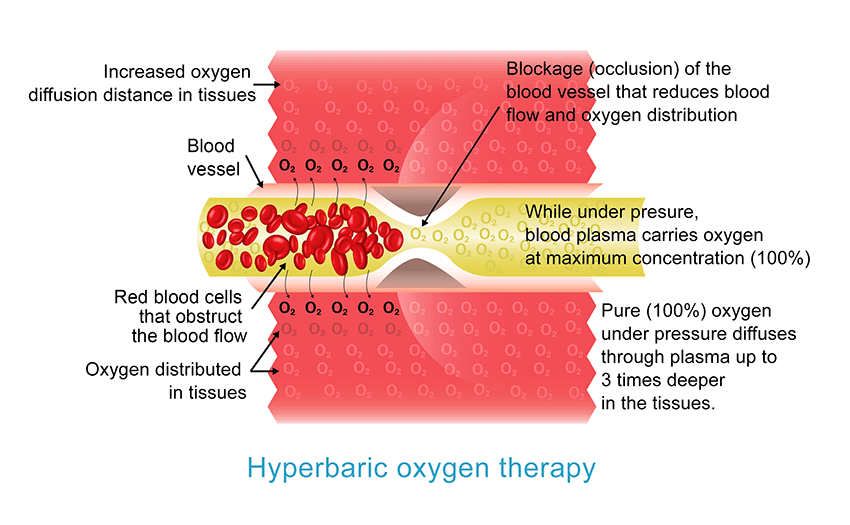
In the image below, we can see how pure oxygen (100%) administered in a specially pressurized barochamber, forces diffusion into the tissues and encourages the formation of new blood vessels:
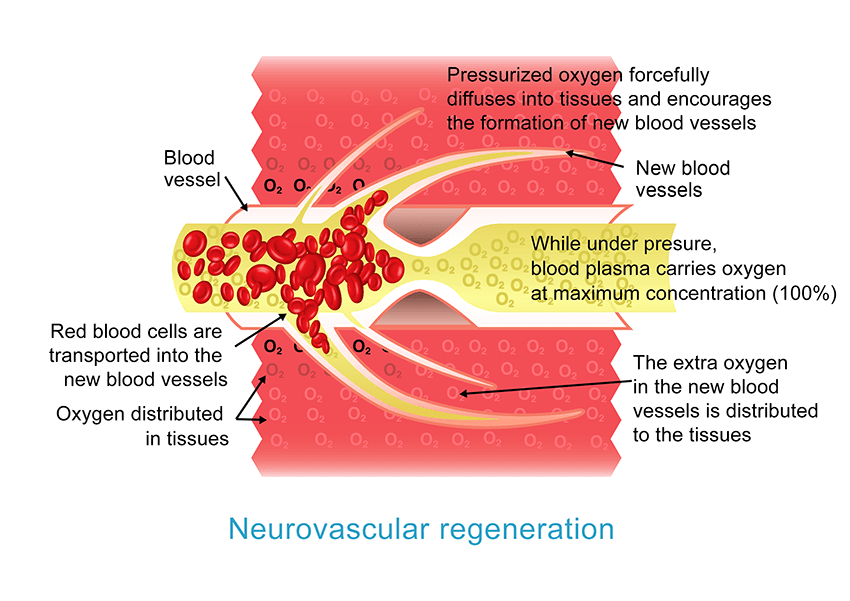
To understand how hyperbaric therapy works, it is essential to know the difference between the types of hyperbaric chambers because only one type of hyperbaric chamber is accredited by the National Agency for Medicines and Medical Devices (ANMDM) and can receive authorization from Ministry of Health and Local Health Authorities.
This distinction ensures that patients receive safe and effective treatments in accordance with regulated standards.
Hyperbaric chambers fall into 2 categories, HBOT and mHBOT. Although they seem similar, the technical differences and medical benefits between the two can be very large.
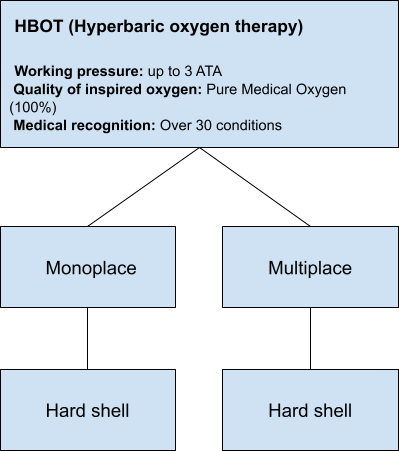
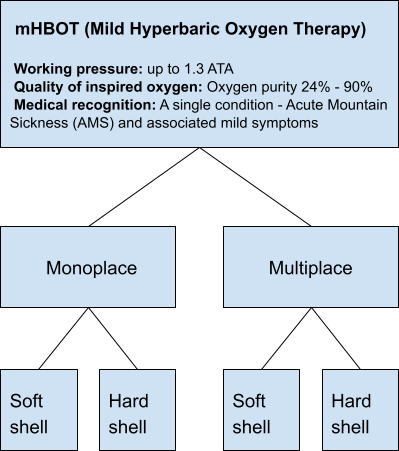
1) HBOT (Hyperbaric Oxygen Therapy) chambers are medical devices certified under Class IIB, according to the EEC directive 93/42. These chambers use pure medical oxygen (100%) and can reach working pressures of up to 3 ATA. They are characterized by a rigid shell and can accommodate from 1 to 30 people. In Romania, the use of HBOT cameras is regulated by the need to obtain accreditation from the National Agency for Medicines and Medical Devices (ANMDM) and authorization from the Ministry of Health and the Local Health Authorities. Their operation is only allowed under the supervision of qualified medical personnel and operators who are periodically certified.
2) mHBOT chambers, also known as "mild hyperbaric", are non-medical variants of hyperbaric chambers. These rooms can have either a hard or soft shell and are usually intended for 1 to 6 people. Unlike medical HBOT chambers, which use 100% pure medical oxygen, mHBOT chambers use oxygen of variable purity, between 24% and 90%, produced by oxygen concentrators. The pressure at which these chambers operate is lower, around 1.3 ATA. Due to the much lower production costs compared to medical HBOT cameras (up to 30 times cheaper), mHBOT cameras have become popular in beauty salons and spas. An important aspect is that these cameras do not require medical clearances or the presence of qualified medical personnel to operate, as they are not classified as medical devices and are therefore not intended for medical treatments. Organizations such as the European Committee of Hyperbaric Medicine (ECHM) and the European Baromedical Society (EUBS) clearly outline the distinctions between HBOT and mHBOT chambers. For official information and detailed information, it is recommended to consult ECHM and UHMS positions regarding mHBOT cameras.
Hyperbaric oxygen treatment works best when the effects are compounded over several sessions. To get the best results, it is important to pay attention to a few key aspects: the number of sessions, the duration of each session, the pressure level in the chamber and how pure the oxygen is used.
According to the recommendations of the European Committee of Hyperbaric Medicine (ECHM) and the European Baromedical Society (EUBS), the pressure in the hyperbaric chamber should be between 2 and 3 ATA (Atmospheres Absolute) and the oxygen used must have a purity of minimum 99.5%.
For treatments in the HBOT (Hyperbaric Oxygen Therapy) rooms, the doctor specializing in hyperbaric medicine will determine the most suitable treatment plan, including the number of sessions required, depending on the specific condition of each patient. For more specific details, read a more detailed comparison between hyperbaric chambers.
Why does the confusion between the two persist?
Although the promotion of mHBOT (mild hyperbaric) chambers for medical treatment is prohibited in Europe, we sometimes find descriptions of HBOT (Hyperbaric Oxygenation) treatment procedures and principles in advertising materials for these mHBOT chambers. This can create confusion not only for patients, but sometimes for doctors as well, regarding the actual technical performance of these hyperbaric chambers. The confusion is also deepened by the decision of some medical clinics to purchase (non-medical) mHBOT devices, attracted by their considerably lower price compared to that of medical HBOT cameras but also by the speed with which they can be put into operation, without the need for qualified personnel or medical clearances.
How does a hyperbaric treatment session work?
To begin a treatment and recovery program with hyperbaric oxygen therapy, the first step is to visit a doctor who specializes in this field. Your doctor will examine you to see if this type of treatment is right for you. It will explain how the sessions work, how many you will need, how long each one lasts and how often you should do them. He will also tell you what benefits the treatment might have for you, as well as any risks or things you need to be aware of.
Before each session, the medical team will remind you of what you need to do to make sure everything goes safely. They will check you to see if you are in good health to continue with treatment by checking your pulse, blood pressure and, if necessary, your blood sugar. It is important to wear 100% cotton clothes and not to bring things into the room that could be dangerous, such as electronic devices or flammable substances.
During the session, you will sit comfortably in the special room, breathing pure oxygen and being monitored by specialists. It's a moment of relaxation, in a controlled and safe environment. After the therapy is over, hyperbaric oxygen treatment does not prevent you from continuing your normal daily activities.
If you are curious to learn more about how hyperbaric therapy works and how it can help you in the treatment and recovery process, the team of specialist doctors at the Hyperbarium clinic is ready to give you the answers you need. Whether you have specific questions about the procedure, want to better understand the potential benefits, or are concerned about safety, our specialists are here to guide you. We encourage you to schedule a consultation at the Hyperbarium clinic, where you will have the opportunity to speak directly with an expert doctor in hyperbaric medicine, who will assess your individual situation and propose the most suitable treatment plan for your needs.



